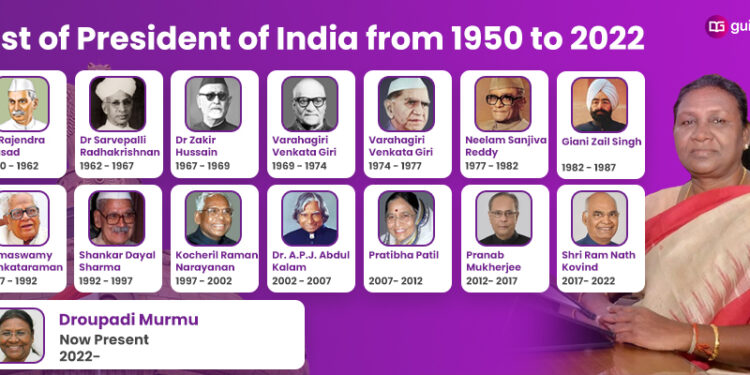The President of India is one of the most important political positions on the world stage. India has had fifteen presidents since 1950, all men of bold character and conviction. They have guided the nation through significant expansion, progress, and political and social upheaval. The office of the President of India carries a tremendous deal of weight and is highly respected.
In this article, you can find of list of presidents of india pdf that describes some of the famous presidents along with their contributions to the country’s development.
What is it to be the President of India?
Being India’s President entails serving as the head of the biggest democracy in the world. They serve as the head of government, the leading commander of the armed forces, and the head of state. An electoral college is made up of elected members of the state legislatures, and the parliament chooses the President.
The President is chosen to serve a five-year term with a two-term limit. Its roles include serving as the protector of all Indians and as a representation of justice and peace. It calls for a leader who can lead the country toward improvement while also being able to serve the people with objectivity.
Rajendra Prasad (1950 – 62 )
The first President of the Indian Republic, Rajendra Prasad, worked to advance the country’s political, social, and economic systems. Prasad fought for social justice and human rights and was a staunch supporter of democracy. He also played a vital role in establishing educational institutions in India that are still well-known for their excellence today. Some of the institutions he founded include the Indian Institute of Science and Research and the Central Food Technological Research Institute.
Sarvepalli Radhakrishnan (1962 – 67)
The First Vice President and second President of India, Sarvepalli Radhakrishnan, was a statesman and philosopher from India. He was a scholar of fame worldwide, and India observes Teachers’ Day on September 5 in honour of him. He made an effort to expand educational chances for underprivileged people. One of the most significant contributions to Indian philosophy and religious thought, his writings continue to have a substantial impact today.
Zakir Hussain ( 1967 – 1969 )
President Zakir Hussain was a statesman who contributed to India’s development as a national icon. He campaigned against minorities being mistreated while in office and fought to strengthen India’s international connections. He implemented laws to support the population’s education and growth and fought to improve linkages between the various Indian states’ cultures.
V V Giri ( 1969 to 1974 )
President V.V. Giri was a fantastic leader who made enormous achievements in India. He is recognised for enacting economic changes that boosted the Indian economy. He also started educational reforms that increased the calibre of education in India. He had a strong passion for social and economic justice, which was the emphasis of his work.
APJ Abdul Kalam (2002 – 2007)
APJ Abdul Kalam was an aerospace scientist who served as the 11th President of India. Because of his contributions to the advancement of ballistic missile and space rocket technologies, he was referred to as the “Missile Man of India.” He was renowned for his commitment to educational excellence and vision of an advanced India.
Droupadi Murmu (2022 – 2027)
She is the second woman president of India after Ms. Prathiba Patel. Also, she is the first person in the tribal community to hold the President’s office. She is the youngest person to occupy the office at 64. Before assuming this office, she was the governor of Jharkhand.
These are some of the famous presidents of India and their contributions to the country. You can download the list of the President of india in pdf form from the internet. Thus, Indian presidents have left a significant influence on the nation. They have put in a lot of effort to support development, stability, and progress over much of India. Their programs focus on addressing environmental problems, expanding access to clean water, pushed to advance gender equality, enhancing healthcare, and lessening poverty.








